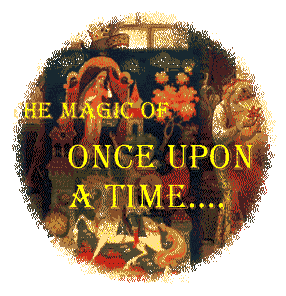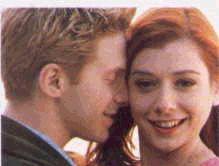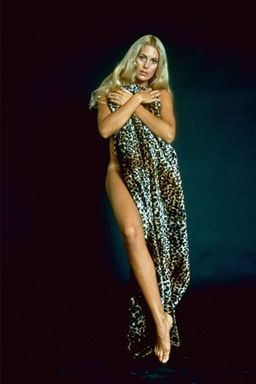|

Narrative Logo - Click for Main Menu
X. The Psychology of
Folk: The Horse at the Well?
Marie-Louise
von Frantz and the Wolves

Marie-Louise von Frantz
Marie-Louise von Franz's classic
work, The Feminine in Fairy Tales, is the basis for this investigation into the
images of women in fairy tales. Von Franz was a disciple of Jung, and, accordingly,
her interpretations depend on the same lexicon as the Jungian terms we looked at in the
second section of the lecture.
(I could, however, find not much
mention of von Franz on the web, except for a book on aromatherapy for children. Sic
transit.)

Caption: Sketch of a bat
Books by Marie-Louise Von Franz
Alchemical Active Imagination
By Marie-Louise Von Franz
Archetypal Patterns in Fairy Tales
By Marie-Louise von Franz
C.G. JUNG: His Myth in Our Time
By Marie-Louise von Franz
Von Franz traces the evolution of Jung’s basic concepts - complexes, archetypes and the collective
unconscious, psychological types, the creative instinct,
active imagination, individuation and much more - from their
origins to their empirical documentation in his numerous
books, papers and recorded lectures.
The Cat: A Tale of Feminine Redemption. Based on a Romanian fairy
tale.
By Marie-Louise von Franz
Pages, 126. Released December 1998.
THE PROBLEM OF THE PUER AETERNUS
Marie-Louise von Franz (Zurich)
ISBN 0-919123-88-0. 288 pp. Sewn $20
The Latin term puer aeternus
means eternal youth. In Jungian psychology
it is used to describe a certain
type of man - charming, affectionate, creative and ever in pursuit of his dreams. These
are the men who
remain adolescent well into their adult years, generally full of life yet strangely
draining to those around them. We have worked with them, loved them and watched them wave
good-bye. It is impossible to overstate the influence on both men and women of this
classic study, originally a series of lectures at the Zurich Jung Institute. It is Jungian
psychology in its most down-to-earth voice, telling it like it is so accurately and with
such a depth of understanding that it is still much in demand even though it has been out
of print for many years. This new edition features a Bibliography and an extensive Index.
Marie-Louise von Franz, Ph.D., worked closely with Jung for almost 30 years. She is known
world-wide for her many books on the practical application of Jungian psychology,
including six other titles in this series.

Caption: Young Lovers
followers in the footsteps
"In the fairy tales of Europe, the
wolf more than any other animal has come to represent the unacceptable faces of society:
sexual predation in Little Red Riding Hood, capitalist bullying in the tale of the Three
Little Pigs. Its symbolic value in art and literature has become largely divorced from the
reality of its existence. Like all animals in fairy tales, these wolves walk on two legs
and speak with human voices. The wolf is thus a convenient metaphor for the storyteller,
no doubt chosen because of an already unsavoury image.
The legend of the werewolf has done for wolves what the legend of the vampire has done for
the bat - provided further layers of superstition and confusion, portraying the wolf as a
supernatural and terrifying beast. The werewolf, by shifting between human and lupine
forms, is at the same time a link between man and wolf and a creature totally alienated
from both, and the deception of a creature that shifts between forms chills us further.
The symbolism of the wolf is one that has been exploited as well as subverted by Western
art and literature, from fairy tales to the 'magical realism' of modern authors. The late
Angela Carter, in her modern gothic collection of re-worked fairy tales The Bloody
Chamber, explores the savage symbolism of the wolf to Central European cultures.
In Carter's telling of Little Red Riding
Hood, our heroine is not a na´ve child, but a sexually-aware teenager, traveling
the
woods armed with a knife, who brings about the fall of her werewolf foe not by escaping
him but by seducing him. In The Werewolf and Wolf-Alice, she explores the manifold myths
of werewolves that are the folklore of Central Europe, depicting through her fiction a
brutal existence made more perilous by the existence of deceitful, powerful, sexually
potent wolf-men.
Other cultures have had different perceptions of the wolf - to Native American Indians,
the wolf is regarded as a teacher and pathfinder, an animal whose skills and sense of
community made it an example from nature to be followed. In Rudyard Kipling's Jungle Book,
the hero, Mowgli, is a boy who has been abandoned in the forest and raised by wolves,
reflecting different cultural attitudes to the animal on the Indian sub-continent. And
every school child knows the legend of Romulus and Remus, founders of Rome - they too were
raised by a she-wolf. " more on
Wolf Totem and Taboo.

Caption: Blonde bombshell wrapped in leopard
skin
books by Pam Keesey
Women Who Run with the Werewolves
Cleis Press, 1995, $12.95
ISBN 1-57344-057-4
“The 15 stories collected examine a wide range of images of the female werewolf, from
the warm and funny to Melanie Tem's disturbing and painful ‘Wilding.’ Being a
changeling can be a curse, a blessing of liberation, or even a sacred responsibility.
Stories connect the werewolf mythos to the female life cycle, including menstruation,
childbirth, menopause and old age. We see some werewolves ostracized by their
communities, and some finding new forms of communion. Stories by Ursula K. Le Guin and
Suzy
McKee Charnas are included in this solid anthology, along with a thoughtful and
informative introduction by Keesey.”
Vamps: An Illustrated History of the Femme Fatale
Cleis Press, 1997, $21.95
ISBN 1-57344-026-4
“Vamps is an insightful look into the long history of the so called ‘bad
girl.’ It peels
away layers of suspicion, conspiracy, and fear to get to the roots of this powerful,
often dangerous image of woman as a sexual and independent creature. From the ancient
tales of
Lilith and Eve, to the witch trials, vampire myths, and modern film vamps, Keesey explores
the
rich heritage of the femme fatale. She delves into the reasoning behind the vilification
of the
goddess, and the midwives of old; and the power behind the appeal of characters like Basic
Instinct's Catherine Trammel (played by Sharon Stone). There is ample vampire content in
Vamps, and the photos are splendid and plentiful. It includes numerous quotes from
historical
sources, films, artists, and poetry; and ends with both a filmography, and a videography
concerning film's most notable femme fatales. A wonderful resource, this book should not
be
missed.”

Caption: Wolf Howling
from Women's Aggressive Fantasies
A Feminist Post-Jungian Hermeneutic
Sue Austin
"Usually, feminist analysis of this kind of
material is given in terms of it being a
psychic embed which occurs as a near-inevitable result of women growing up
in a patriarchy. The common (feminist and non-feminist) assumption is that if
a woman simply learns to 'love herself enough', develop enough 'good internal
objects', come to terms with her 'inner masculine', or whatever, either the
inner critic will stop, or the woman will somehow be better able to stand up to
it (2). I would argue, however, that these experiences are more complex than
is usually allowed for and that they say something important about women's
experiences of, and fantasies around power, aggression, visibility, agency, and
much more besides.
It needs to be made clear that I am not suggesting that such experiences are
somehow 'good for women' or 'part of women's essential nature'. Nor am I
refuting the notion that, to some degree (possibly in large part), they may be to
do with women's experience of life under patriarchy. I am simply more
interested in questioning what women can do with these experiences to turn
them into something which serves their own interests.
Perhaps the phenomena in question could usefully be regarded as aspects of
women's resistance to identity which, as Rose points out, lies at the core of
psychic life. Again, this statement is not essentialist, it is simply an attempt to
frame observed phenomena in such a way as to make meaningful exploration
of them possible.
Splitting and Social Reinforcement of Splits
The resistance to identity which Rose refers to is a discomforting, unsettling,
potentially tormenting thing which uproots our attempts to build an illusion of
coherence, or makes us suffer for our pains when we try to build it. Here,
experience is a coalescing, fragmenting, kaleidescoping uncertainty around
identity, with discomfort as a constant and a given.
A way of managing this level of experience is to channel the terror associated
with it into socially sanctioned forms backed by the institutions and discursive
practices which support and perpetuate them. Thus moving beyond these
structures may not be as straightforward as it at first seems. Part of what
societal violence towards women offers is a way of locating the instability,
danger and madness 'out-there'. None of it is 'in-here', 'inside us', or 'inside
me', particularly if 'I' happen to be a member of a socially privileged group. A
strong case can be made for the position that women do this as a result of
living under a patriarchally defined gender-regime. But that does not facilitate
change. It is a position which once understood needs to moved beyond,
otherwise it becomes self-victimisation. The question is, how?
The curious thing about female identity is that it is so clearly learnt, a fact
which makes it both interesting and disconcerting. Walkerdine points out that
Freud commented '[T]he constitution [of the little girl] will not adapt itself to
its function [heterosexual femininity] without a struggle (Freud 1933, p.117)',
(Walkerdine, 1990, p.88) and Judith Butler (1990) argues that female identity
is one of the places in social discourse where the extent to which identity (in
this case gender identity) is performance is most obvious. To take the
argument further we need to look at work done on how girls learn to be
women. Specifically of interest is how girls learn to fabricate an illusion of
coherent 'feminine' identity which offers them significant defenses against the
experiences which arise from a fundamental resistance to identity."

Caption: Human werewolf
Lilith Notes
end Lecture X.
Return to Menu
|






